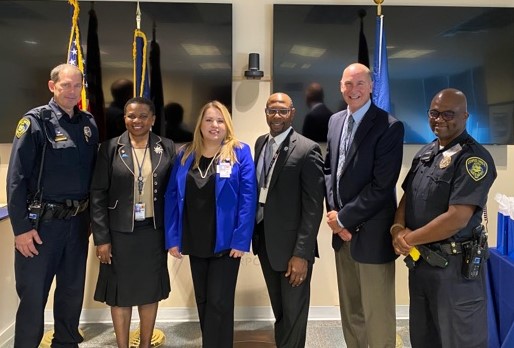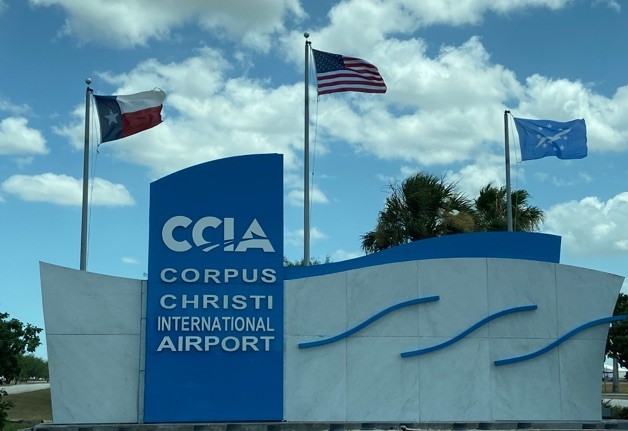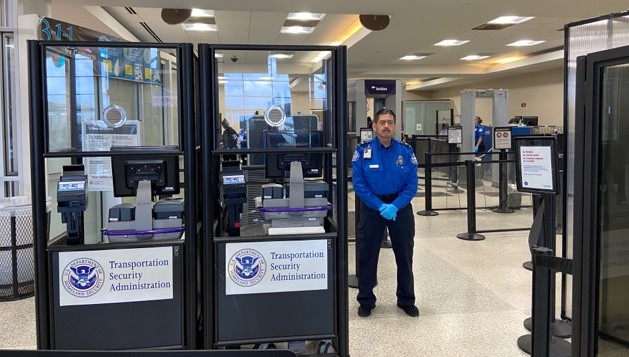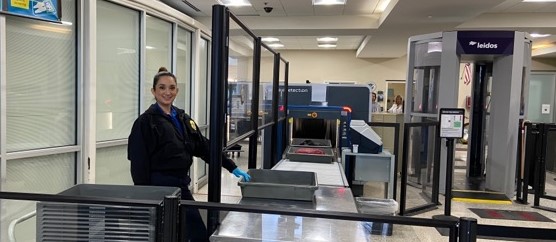 20th Anniversary celebration Corpus Christi Airport
20th Anniversary celebration Corpus Christi Airport
Corpus Christi — Officials from the Transportation Security Administration (TSA), Corpus Christi International Airport (CRP) and the City of Corpus Christi commemorated the 20th anniversary of the federalization of the airport today.

Corpus Christi’s airport launched under TSA security oversight in early September 24, 2002, with a security checkpoint staffed by federal TSA officers one year after the terrorist attacks of Sept. 11, 2001.
The Aviation and Transportation Security Act (ATSA) became law in November 2001, establishing the TSA. That fall, TSA consisted of about 100 people working at folding tables in the basement of the Department of Transportation headquarters. Today, 20 years later, there are 430 federalized airports and a workforce of about 60,000 employees nationwide. Approximately 60 TSA employees work at CRP International Airport today and 12 of them have been with the agency for all 20 years.
“From our initial federalization as a TSA airport on September 24, 2002, until the present moment, our TSA team here at Corpus Christi has been focused on our mission with the thoughts of those who were murdered by the terrorists 20 years ago, imprinted in our minds,” said Tommy Johnson, TSA’s Assistant Federal Security Director. “We are dedicated to our jobs so that there is not another catastrophic 9/11-type of event.”
For the past 20 years, “we have partnered with our federal, state and local partners, which has strengthened our security posture,” Johnson added.

Johnson pointed out that “in the early days our airport team had no standard operating procedures, no computers and no cell phones. The busiest travel days are Thursdays and Fridays, so a reminder to arrive early is always warranted.”
In the intervening years since launching, TSA has developed and implemented strong security procedures, built a well-trained and highly skilled professional workforce, and introduced a wide array of state-of-the-art technologies to screen passengers, baggage and cargo.

During the past 20 years, “we have met and overcome numerous challenges from the initial start-up to enhancing our security posture and procedures to make the adjustments necessary to address the evolving threats of our adversaries,” Johnson said.
Guided by an intelligence-based approach, today TSA is at the forefront of security technology and innovation. Technologies such as computed tomography, credential authentication technology and advanced imaging technology have greatly improved TSA’s detection and identity verification capabilities in ways the initial group of TSA employees could have only imagined 20 years ago.
